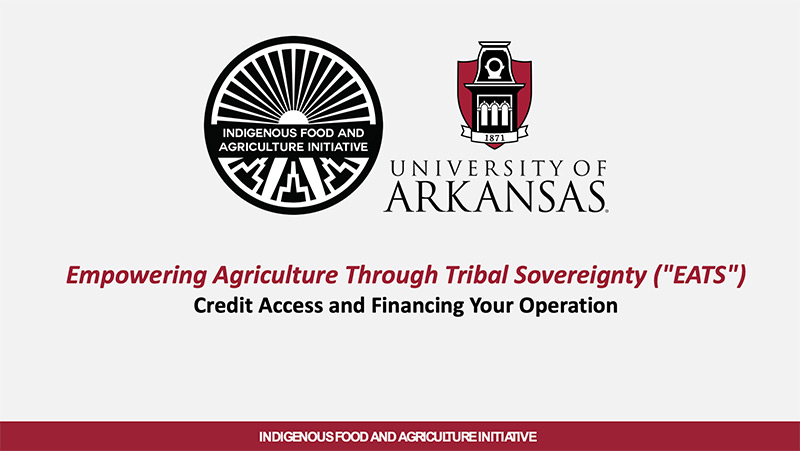Credit Basics
- Credit is a contractual agreement in which a borrower receives something of value now and agrees to repay the lender at some date in the future, generally with interest.
- Car loans, student loans, home loans, credit cards, farm loans, store credit, etc
- Today we’ll be discussing:
- Credit scores
- Credit bureaus
- Credit history and credit reports
Credit Scores
What is a credit score, and where does it come from?
- It depends. There are at least six different “credit score scales” and they all have different ranges. Most lenders still look at FICO for personal credit, and this list is generally a good representation of scoring:
- Excellent Credit: 750+
- Good Credit: 700–749
- Fair Credit: 650–699
- Poor Credit: 600–649
- Bad Credit: below 600
- FICO stands for Fair Isaac & Company. Every credit reporting agency uses a different mathematical formula to calculate your score. They base them on similar factors– age of accounts, on time payments, total available credit line, etc– but they’re usually a few points different
Credit History & Reports
When looking at a first-time borrower, lenders are typically concerned with your past credit record. That means we need to talk about your credit report, which is where you can see your credit history.
Remember! Your credit report is not the same thing as your credit score. A credit report is a detailed report of your credit history. Credit bureaus collect information and create credit reports based on that information, and lenders use the reports along with other details to determine loan applicants’ creditworthiness.
- There are three major credit bureaus: Experian, Equifax, and TransUnion
How do I access my credit report?
To get started, go to: www.annualcreditreport.com.
Federal law allows every consumer to access one free credit report per calendar year. This website makes that process quick. Your credit score will NOT be affected by getting your free report each year.
If you don’t have reliable internet access, however, you can still request your free reports through the mail. Call Annual Credit Report toll free at 877-322-8228 for questions on this process.
Be sure to request your report from ALL THREE major credit agencies: Experian, Equifax, and TransUnion. Not all credit accounts report to all 3 bureaus– or any bureaus! So your reports can look different depending on what has been reported. This is especially important if there is an error on one of your reports, but not on all three. The only way to know is to get all of them.
Reading Your Credit Report
Your credit report will have a section for “inquiries.” These come in 2 flavors: those that impact your credit score (a “hard” inquiry) and those that don’t (a “soft” inquiry).
A hard inquiry isn’t necessarily bad. It will appear when you apply for credit. Always read these to make sure you recognize the institutions listed as making an inquiry– mistakes and identity theft do happen!
Summary of Credit Basics
- Your credit score is a number that some lenders will use to decide whether or not to extend credit to you.
- Your credit history comes from your credit report.
- Three credit bureaus– Experian, Equifax, and TransUnion– are the major companies who keep credit reports. You can get one report for free annually from each of these companies by visiting www.annualcreditreport.com.
- Different lenders report differently, so your credit reports may look different from each bureau. Read carefully and dispute any wrong information.
- If there are negative entries due to factors outside your control, make a note to explain the situation.
Financing Agricultural Operations
Many different options exist to finance your operation:
- Traditional Options
- Banks/Lending Institutions
- Farm Credit System
- Insurance Companies
- Private Financing
- Native CDFIs
- Public Options
- USDA – Farm Service Agency
Our focus today will discuss the USDA-Farm Service Agency, with mention of the Farm Credit System and Native CDFI financing options
USDA Farm Service Agency
The USDA Farm Service Agency is a federal agency tasked with providing direct lending and government-backed loans to agricultural producers.
- Approval is less concerned with credit score and more focused on overall credit history
- Will not automatically disqualify applicants from getting a loan because of:
- Previous history of slow payments
- No credit history
- Recent poor credit when problems were due to temporary conditions outside your control
- Wants to see an “acceptable credit history” from an applicant.
- That includes your credit history with the federal government– previous loan repayments matter!
“Lender of Last Resort”
- FSA can offer lending options when commercial lenders won’t, but on a temporary basis.
- FSA’s goal is to assist farmers and ranchers with lending until they are financially prepared to transition into the commercial credit system.
- When borrowers graduate to commercial credit, their FSA loans are refinanced with a commercial lender.
FSA Farm Loan Programs
Microloan < $50K
Microloans are operating loans designed to meet the needs of small and beginning farmers, non-traditional, specialty crop and niche type operations by easing some of the requirements and offering less paperwork.
Operating < $400K
Direct Operating Loans are used to purchase items such as livestock and feed; farm equipment; general farm expenses, and family living expenses; make minor improvements or repairs to buildings and fencing.
Farm Ownership <$600K
Direct Farm Ownership Loans are used to purchase or enlarge a farm or ranch, construct a new or improve existing farm or ranch buildings, and for soil and water conservation and protection purposes.
FSA Farm Loan Programs: Targeted Loan Audiences
Youth Loans <$5K
Youth Loans are used by young people participating in 4-H clubs, FFA , or a similar organization, to finance educational, income-producing, agriculture-related projects.
Minorities & Women
Minority and Women Farmers and Ranchers loans support the full participation of minority and women family farmers in FSA’s farm loan programs by targeting a portion of its direct and guaranteed farm ownership and operating loan funds for minority and women farmers to buy and operate a farm or ranch.
Beginning Farmers
Beginning Farmers and Ranchers loans provide credit opportunities to eligible family farm and ranch operators and owners who have been in business less than 10 years.
FSA Farm Loan Programs: Specialty Loans
Guaranteed Loans
Guaranteed Loans enables lenders to extend credit to family farm operators and owners who do not qualify for standard commercial loans. Producers receive credit at reasonable terms to finance their current operations or to expand their business; financial institutions receive additional loan business and servicing fees, as well as other benefits from the program, such as protection from loss.
Emergency Loans
Emergency Loans help farmers and ranchers recover from production and physical losses due to drought, flooding, other natural disasters or quarantine.
USDA Farm Service Agency
Basic Loan Requirements:
- Must not have Federal or State conviction(s) for planting, cultivating, growing, producing, harvesting, storing, trafficking, or possession of controlled substances.
- Have the legal ability to accept responsibility for the loan obligation.
- Have an acceptable credit history
- Be a U.S. citizen, non-citizen national or legal resident if the U.S., including Puerto Rico, the U.S. Virgin Islands, Guam, American Samoa, and certain former Pacific Trust Territories.
- Have not previous debt forgiveness by FSA, including a guarantee loan loss payment.
- Be unable to obtain sufficient credit elsewhere, with or without an FSA loan guarantee.
- Not be delinquent on any Federal debt, other than IRS tax debt, at the time of loan closing.
- Not be ineligible due to disqualification resulting from Federal Crop Insurance Violation.
- Be able to show sufficient farm managerial experience through education, on-the-job training and/or general farm experience to assure reasonable prospect of repayment ability.
- Must be the owner-operator of a family farm after loan closing.
Farm Credit System
The Farm Credit System is a network of 72 borrower- owned lending cooperatives structured as a Government Structured Enterprise
- Not a federal agency itself, operates like a customer-owned private entity with borrowers purchasing stock as part of their loan (not a bank – does not take deposits!)
- Established by federal charter and regulated specifically by Farm Credit Administration, a federal agency
- Provides loans and related financial services to U.S farmers and ranchers, farmer-owned cooperatives and other agribusinesses, rural homebuyers and rural infrastructure providers.
- Raises capital through selling debt securities, cooperative stock and retained borrower profits
Native CDFI’s and Credit Repair/Monitoring
Native community development financial institutions (CDFIs) can be a great resource in the credit arena, both for financial education and for ongoing credit repair and monitoring.
By partnering with the Credit Builders Alliance, CDFIs can report to 2 of the 3 major credit bureaus.
- Reporting on loans through the CDFI can help you build a credit history. Just six months of on-time payments can create a solid credit history and a great score. Even small loans can earn you between 15 and 100 points on your score if they are paid on time for at least six months.
Through their CBA partnership, CDFIs can also help you monitor your credit. With your permission, they can make “Soft” inquiries for your credit report that won’t lower your score, but will allow you to do some monitoring more than just once a year.

